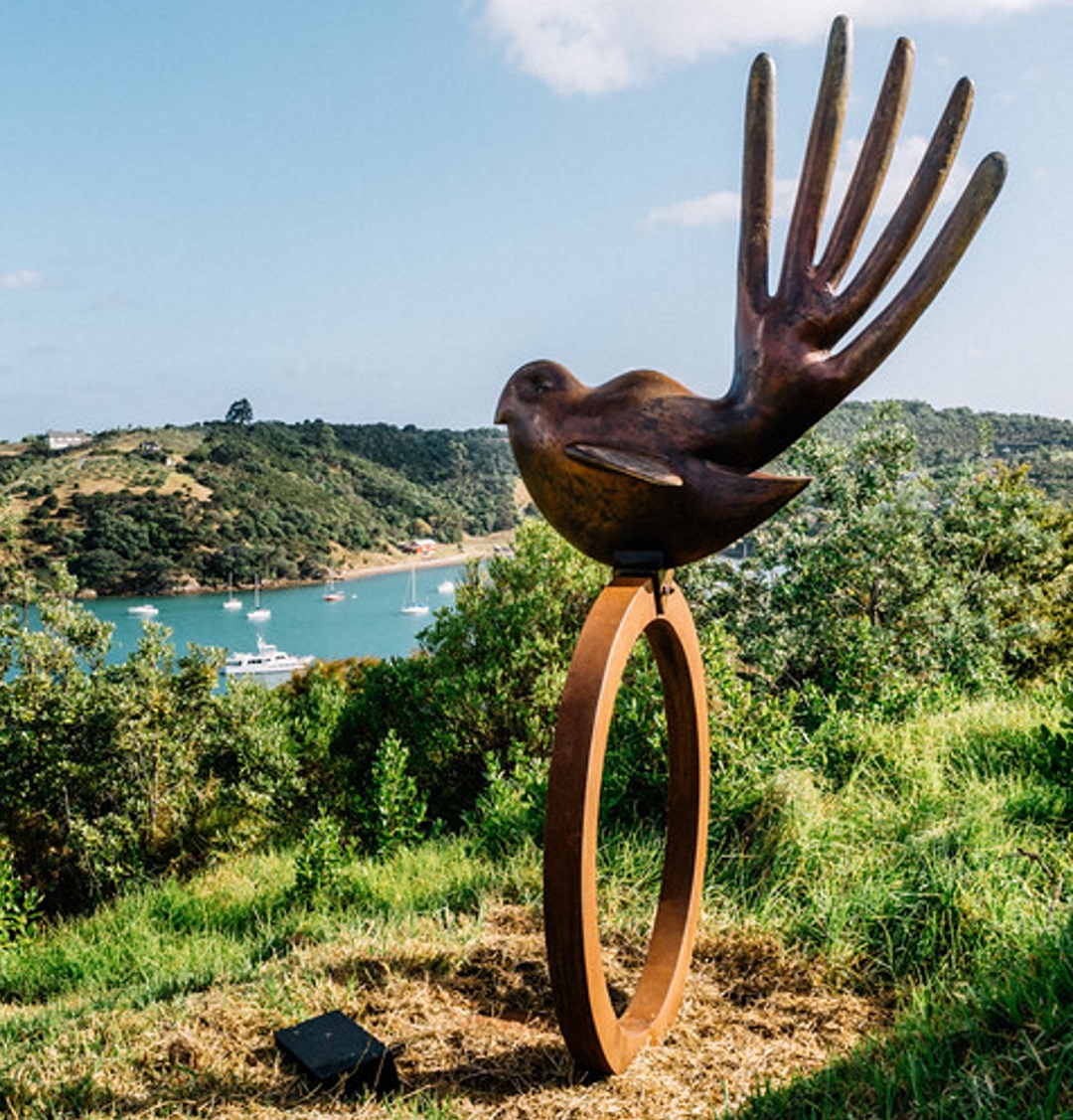Fantail on ring, 2016
corten steel and cast bronze
2,400 x 1,300 x 1,300 mm
Native birds hold particular resonance in New Zealand culture and have emerged as somewhat emblematic of its national identity. Revered by Māori, their metaphorical significance is remembered in local legends, while contemporary bird imagery commonly represents the country’s unique wildlife and natural environment. Prior to the arrival of Polynesian settlers to Waiheke, the dense bush was a haven for noisy birds. Paul Dibble draws on this history, inserting larger than life native birds back into the landscape.
Fantail on ring captures the characteristics of piwakawaka (fantail). Following Dibble’s practice of combining local culture and Western art history, the bird is balanced on an elegant geometric perch, reminiscent of minimalist sculpture, highlighting how art, design and culture have abstracted from nature.


